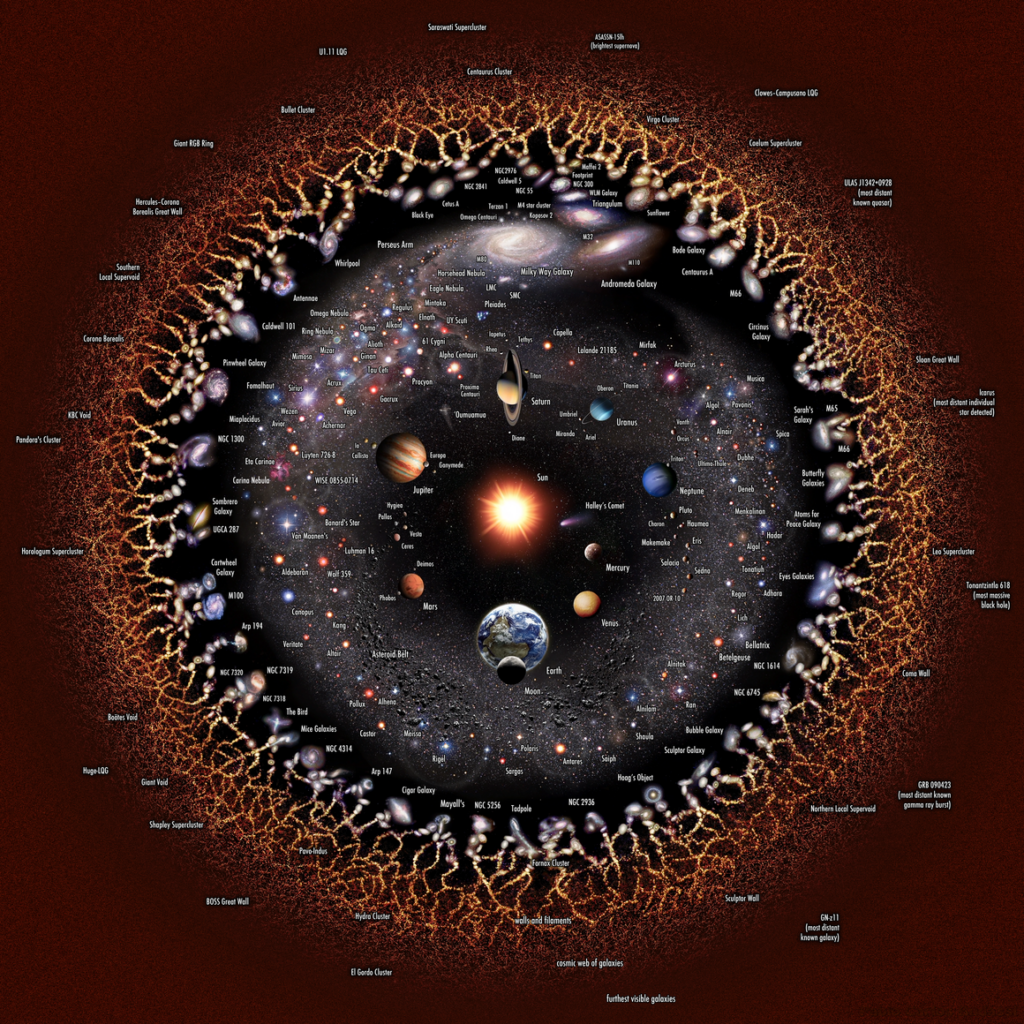About our universe
he universe encompasses everything that exists, including space, time, all forms of matter and energy, and the structures they form. It’s a vast and ever-expanding entity, with the portion we can observe estimated to be about 93 billion light-years in diameter. The universe’s origin is attributed to the Big Bang, which occurred approximately 13.787 billion years ago.
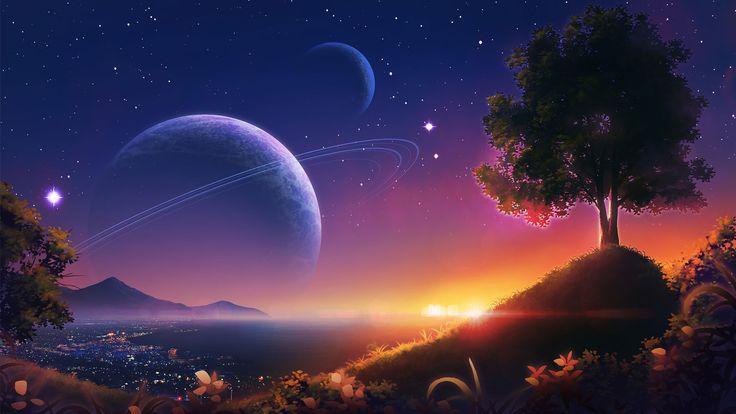
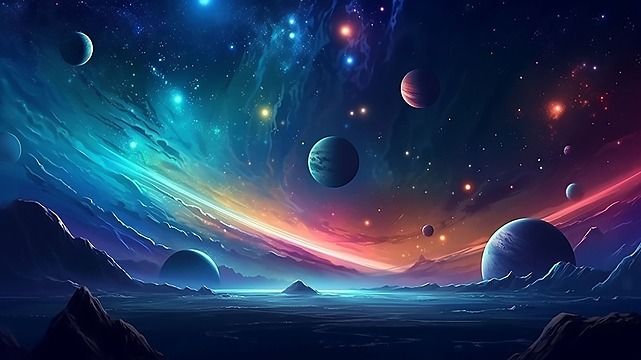
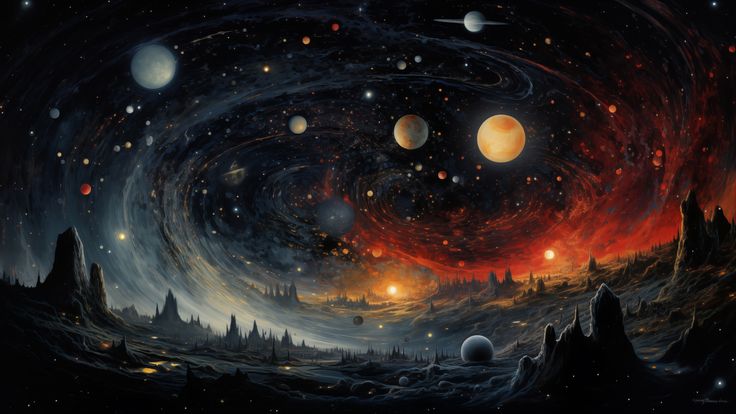
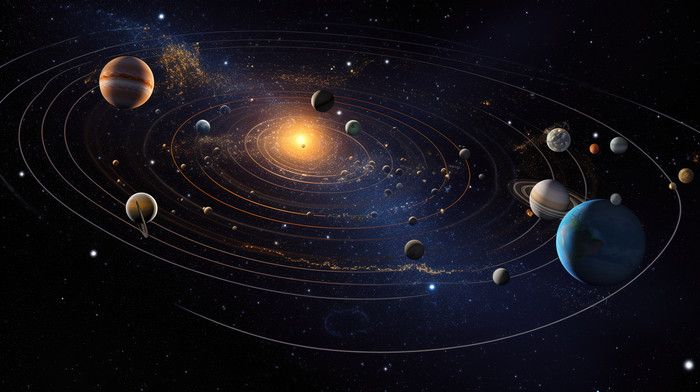
Size and Regions
Due to the finite speed of light, there is a limit (known as the particle horizon) to how far light can travel over the age of the universe. The spatial region from which we can receive light is called the observable universe. The proper distance (measured at a fixed time) between Earth and the edge of the observable universe is 46 billion light-years[49][50] (14 billion parsecs), making the diameter of the observable universe about 93 billion light-years (28 billion parsecs).[49] Although the distance traveled by light from the edge of the observable universe is close to the age of the universe times the speed of light, 13.8 billion light-years (4.2×109 pc), the proper distance is larger because the edge of the observable universe and the Earth have since moved further apart.[51]
